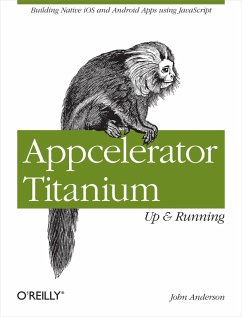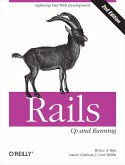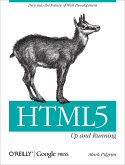Build native apps for iOS, Android, and Blackberry from a single JavaScript codebase with Appcelerator Titanium. This guide gets you quickly up to speed on this amazing framework and shows you how to generate cross-platform apps with 100% native controls. Youll also learn the advantages of using Titanium when you want to create an app for just one native platform, rather than struggle with Java or Objective-C.Fast-paced and full of examples, this book helps you build your first project with Titanium Studio, and then takes you through the steps necessary to build complex data-bound apps.Learn how Titanium differs from frameworks such as jQuery Mobile and Sencha TouchSet up and use iOS and Android SDKs and compilers with TitaniumBuild basic UI and window controls, and create your own composite objectsTake a peek at how Titanium objects and methods work behind the scenesLearn how JavaScript makes Titanium easy to extend and customizeDevelop apps that consume complex data, whether its stored locally or on remote serversUnderstand the pros and cons of distributing apps on the App Store and Android Market
Dieser Download kann aus rechtlichen Gründen nur mit Rechnungsadresse in A, B, BG, CY, CZ, D, DK, EW, E, FIN, F, GR, HR, H, IRL, I, LT, L, LR, M, NL, PL, P, R, S, SLO, SK ausgeliefert werden.









